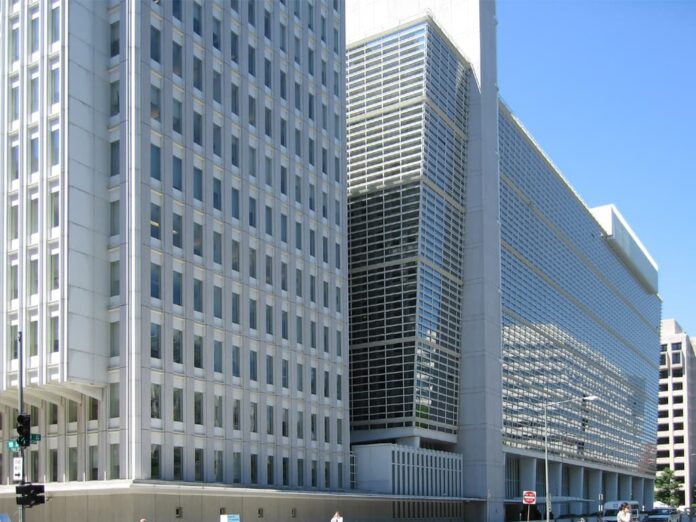The World Bank (WB) has significantly revised down the GDP growth rate forecast for Pakistan from 2.4 percent for the outgoing fiscal year 2019-2020 by five percent to negative 2.6%.
According to the latest report “Global Economic Prospects”, the bank predicts Pakistan ‘s current-year growth rate at negative 2.6 percent — five percent lower than its January 2020 estimates — before touching negative 0.2 percent for the 2020-2021 fiscal year to come.
For the outgoing fiscal year, the National Accounts Committee estimated GDP growth to be negative at 0.38 per cent.
The coronavirus pandemic’s rapid and unprecedented shock and shutdown measures to control it have thrown the global economy into a severe contraction.
The global economy is set to shrink by 5.2 percent this year, according to bank forecasts.
That would mark the deepest recession since World War II, with the bank added the largest fraction of economies suffering declines in per capita output since 1870.
Both Pakistan and Afghanistan are projected to suffer contractions in 2020.
Furthermore, the bank said that while limited test capacity could understate the true scale of the regional outbreak, the majority of the region’s infections are in India (200,000), Pakistan (70,000), and Bangladesh (50,000). National lockdowns sharply curtailed development in the services sector and industrial production in these three largest regional economies.
Sales and manufacturing in a number of main sectors in regional economies (e.g. cars in Pakistan, clothes in Bangladesh) were especially hard hit by anemic demand.
Concurrently, business trust in both the manufacturing and service sectors has plummeted in economies like Pakistan’s.
Key national trade corridors have witnessed disruption.
It further stated that private consumption has been severely hampered by the introduction of large-scale lockdowns in several economies, including Bangladesh, India, Nepal and Pakistan.
Some recent relaxations to these steps were cautious given the continuing increase in the cases of Covid-19.
Closures of non-essential businesses stalled retail sales.
The closing of small and medium-sized enterprises, a crucial driver of regional private sector development, resulted in significant job losses and private investment.
The rapid fall in oil prices in 2020, despite significant oil imports in India and Pakistan, may provide some support for the region and help stabilize fiscal and current account balances. However, this positive effect can be offset by falling remittance inflows from oil-exporting economies, as economies that host migrants from the South Asian region (SAR) face the pandemic’s challenges and oil price collapse.
These flows are expected to decline in this year’s SAR Region by about one-fifth.
International travel bans and the closure of schools were widespread in SAR economies.
In two-thirds of countries public transport has also been closed.
Near complete lockdowns in many regional economies seriously hampered mobility and impeded the provision of critical services, non-essential businesses in Pakistan were closed and airports shut down for arrivals in Sri Lanka.
A number of commodity importers have proposed stimulus
packages amid the deterioration in fiscal positions (India, Pakistan, Poland,
Thailand, and Turkey).
Fiscal, liquidity and loan support measures have been announced in SAR, India,
Pakistan, and Bangladesh, ranging from 3% to 10 % of GDP. Measures in Pakistan
also include additional healthcare expenditures, cash transfers, and utility
payment relief. The SAR’s median fiscal deficit is forecast to grow from 5.4
per cent of GDP in 2019 to 6.9 this year.



